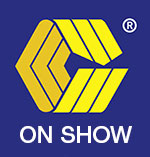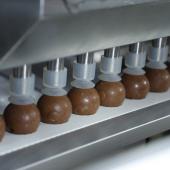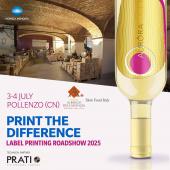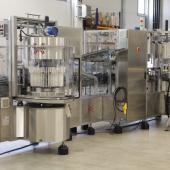TLM: the next generation
The packaging technology by Gerhard Schubert GmbH is more and more flexible. Premiere on show.
The latest TLM generation by Gerhard Schubert GmbH will be a premiere at interpack 2014. Among the new features: a prototype of the world’s first packaging machine without a switch cabinet, the launch of 3D scanners as a milestone for product image processing and both the housing and the inner workings of the transmodules. Schubert will exhibit a total of three TLM picker lines and a TLM packaging line at trade fair stand 14A06 in Hall 14. The packaging line utilises automatic tool change to produce shelf-ready cartons of aerosol cans.
More intelligence, less mechanics
With all of its innovative projects, Schubert pursues the principle of combining intelligent software with reduced mechanical systems. This approach is also embodied in the packaging machines without switch cabinets. The more narrow head section of the TLM machine, which itself is known as “robot heaven”, is a visible indication that conventional electrical systems have been eliminated. In the future, less room will be required where Gerhard Schubert originally placed the control cabinet when launching the TLM series. This is due to the fact that the servoamplifiers are part of the TLM robot within a decentralized controller system and no longer take up space in the control cabinet. In addition, the number of electronic parts has been significantly reduced.
The advantages. Schubert already achieves higher efficiency in manufacturing and configuring the lines in the current stage of development. Customers benefit from lower maintenance expenditures. Because each function can also malfunction, having fewer components means a lower susceptibility for error.
New performance dimensions for the Vision System
The 3D scanner from Schubert realizes spatial perception. The resulting height profile reflects the three-dimensional shape of the product to be packaged. This development is based on the stereoscopic approach, which means that the scanner captures two views of each product from different viewing angles. In doing so, it realises a height resolution of 0.5 mm in a measuring range of 60 mm height. This advancement has facilitated numerous application options. This technology has raised quality assurance to a new level of performance. The 3D scanner opens up attractive control parameters such as volume, weight and stack height. The Vision System tolerates belt soiling, as long as it remains below a certain height threshold, which allows products to be detected under difficult conditions. The first TLM picker line with a 3D scanner has already been put into operation by a candy manufacturer in Belgium.
Transmodule with talent
Since the transmodule was introduced in 2009, around 3,000 of these transport robots have been put into use in TLM (top loading machine) packaging lines worldwide. They convey products and boxes in TLM standard machines or picker lines, act as carrier carriages for the deep-drawing tools, or facilitate automatic tool change. The transmodule ultimately made it possible to realise the new TLM filling machines.
As part of the latest TLM transmodule update, the transport carriage was shortened and equipped with an LED display to indicate the operating status. The transmodules’ control electronics are now based on a Uni 5 assembly, the current controller assembly of the latest generation of the Schubert packaging machine controller.
The values for maximum acceleration and speed have been significantly increased. Furthermore, Schubert has already announced the next conceptual product for the intelligent transport robots: transmodules that can move along curves. Negotiating curves allows even more freedom when designing the layout. Unnecessary interfaces are eliminated and the line’s compactness increases.
VMS: improved performance for data transfer
There is also news regarding the VMS packaging machine controller. The fifth generation of VMS modules now communicate via Sercos rather than via the signal bus. As a standardized, real-time-capable Ethernet bus, Sercos provides advantages in data transfer while at the same time guaranteeing the deterministic transfer of signals (16,000 signals per millisecond and 10 million data bits per second).
Flexible for all products
The four packaging machines displayed will give an impression of the broad range that Schubert offers.
The packaging machine prototype without switch cabinets processes infusion bags as its product. Members of the new Schubert Pharma expert team will be available to consult customers from the pharmaceutical industry.
The packaging line for cartoning aerosol cans will be delivered to a customer after interpack. With this exhibit, trade fair visitors can obtain information regarding the function of the automatic tool change. The line comprises just four sub-machines. It currently processes aerosol cans of four different sizes and makes shelf-ready cartons in four different dimensions (cardboard tray plus lid). The output is 320 products per minute.
A picker line which groups bottles on transmodules using TLM-F44 robots conveys an impression of the diverse options for the beverage industry. The trade fair machine runs with an output of 12,000 bottles/hour and demonstrates product handling without any backup. It combines a compact design with high flexibility.
Another picker line groups chocolate bars on TLM transmodules. The trade fair machine runs with an output of 600 bars per minute and visualises how TLM lines handle products both flexibly and extremely gently.

As part of the latest TLM transmodule update, the transport carriage has been shortened and equipped with an LED display for the operating status. |
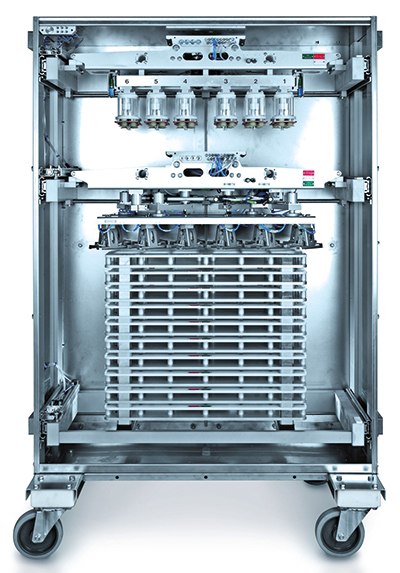
The automatic tool change enables sizes to be changed at the press of a button. While doing so, tools are packed in tool cabinets automatically and neatly. |
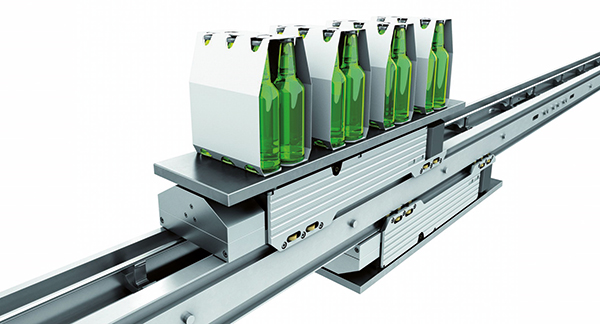 The TLM picker line groups bottles, running with an output of 12,000 bottles/hour. It visualises how TLM lines handle products without any backups. |
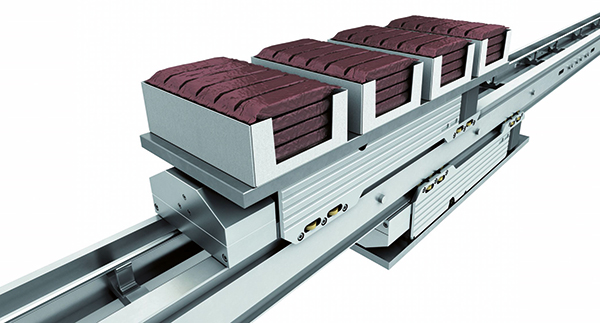 A TLM picker line groups chocolate bars on TLM transmodules, running with an output of 600 bars/minute and visualising how TLM lines handle products both flexibly and gently. |
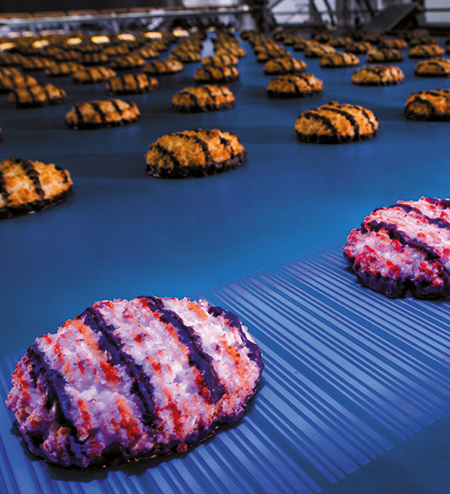
The 3D scanner allows new requirements to be defined, including quality assurance parameters such as volume, weight, or stack height. |



